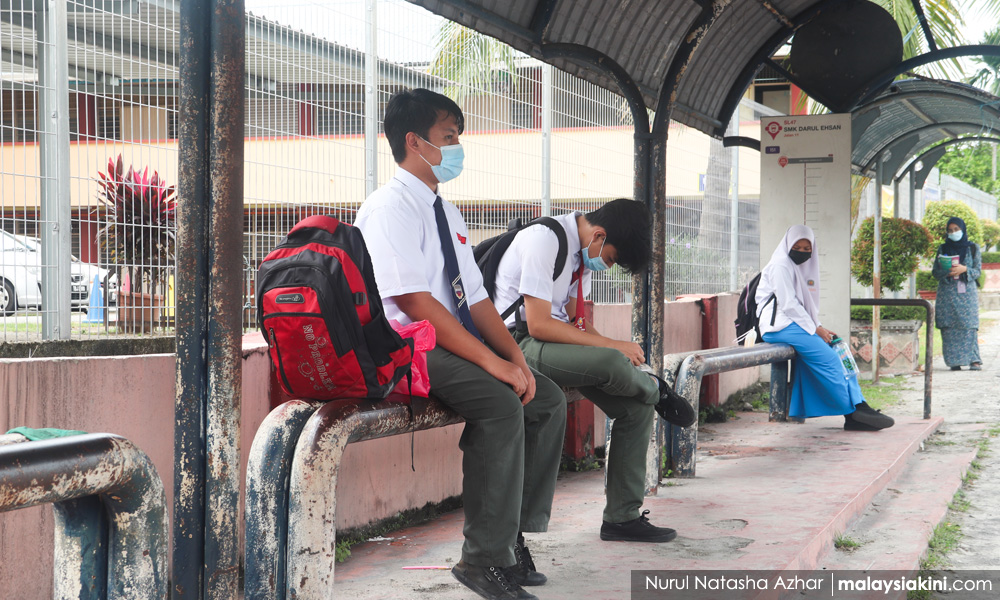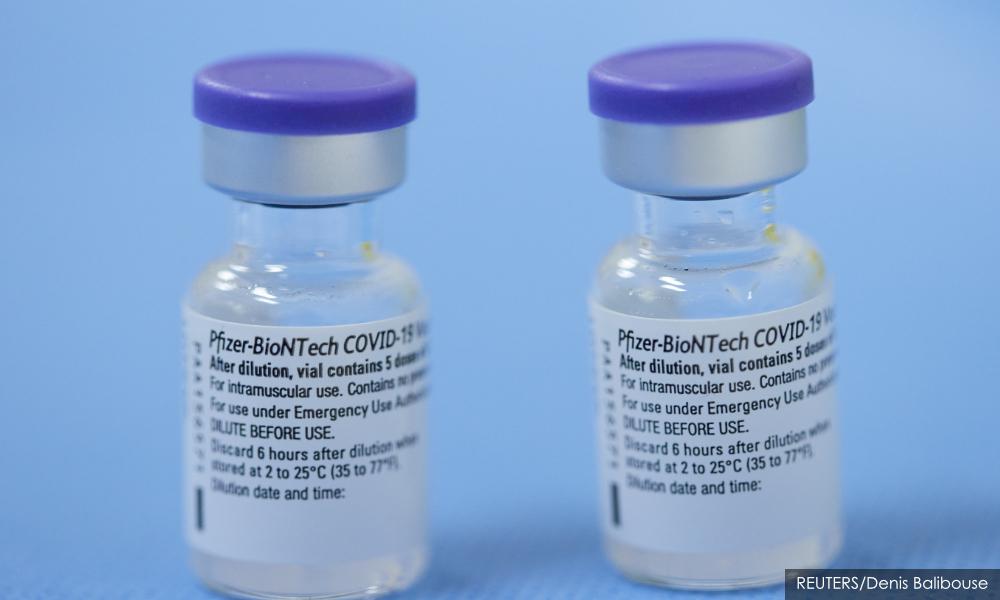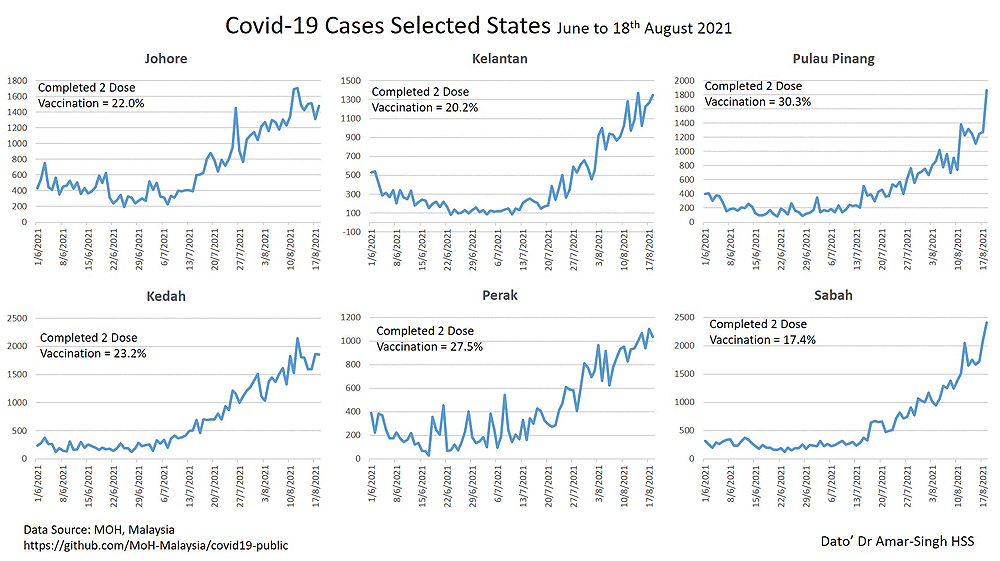We have all been occupied by the political situation in the country but the Covid-19 virus is not. It continues its ‘relentless march’ forward whether we are focused on it or not. While getting an efficient government that deals with the pandemic decisively is critical, we as the people of Malaysia need to be prepared for what is coming our way.
I would like to share with you some possible expectations for the coming weeks and months; some thoughts and opinions based on current data.
The greater Klang Valley - Selangor, Kuala Lumpur and Putrajaya - as well as Negeri Sembilan, have started to see an improvement with a plateau and slow drop in case numbers and hospitalisations (see attached graphic, used with permission from Code Blue).
With high vaccination rates of the total population, 54.0 percent of the Klang Valley and 48.8 percent in Negeri Sembilan, this was expected. The number of patients in the hospital and Intensive Care Unit (ICU) will take longer to show a good recovery as these are often delayed by 10-14 days from case numbers.
This does not mean the end of the crisis for the Klang Valley as we have to be vigilant, but it is a welcome sign for all the exhausted healthcare professionals.
Worsening crisis elsewhere
The crisis I wrote about in recent weeks is now fully established in six states - Sabah, Kedah, Johor, Perak, Kelantan and Pulau Pinang. Sadly, these six "sister" states are travelling together into a worsening situation. The graph (below) shows the rising number of cases detected daily; a proxy of severity.
Note that when ICU beds are full, tracking hospitalisation and ICU bed numbers becomes less valuable, as real numbers that need care are not shown. Information from colleagues on the ground reveals a grim reality, not unlike the Klang Valley disaster in the past weeks.
We may be in for catastrophic death numbers in the coming six to eight weeks. We can also expect that national Covid-19 numbers in the coming weeks will be driven by these states - 45 percent of all cases (10,401 out of 22,948) on Aug 19 were from these six states.
The six states have a total completed vaccination rate of only 30 percent or less; with four states having rates less than 25 percent. Malaysia has so far only received 34 percent of the Covid-19 vaccine supply ordered; hence ramping up vaccination in these states will take time.
Even if we could boost vaccination rates to 50 percent of the population in these six states in four weeks, it will still require two weeks post-vaccination for impact. Hence we are in for a very difficult and painful two months.
I would stress here that any discussion on vaccination rates in Malaysia must take into account total population vaccination rates and that we should stop using adult population vaccination rates.
Infections in children the next wave?
In countries where the vaccination of adults is high, they have seen a rise in infection numbers in children. The highly infectious Delta variant also appears to cause more harm to children, but international data on this is still preliminary. Locally, we will see this "wave’" happening first in the Klang Valley and Sarawak where adult vaccination rates are high.
There has been a recent upsurge in the number of children with Covid-19 admitted locally. We need the Health Ministry to closely monitor this trend and reflect it in the daily data shared with the public; in particular the number of children with severe illness and deaths.
There have been calls to commence vaccinating children in Malaysia. As a paediatrician, I am very keen to support and protect children but as a Malaysian, I am thinking of all our adults who have yet to be vaccinated in many states; especially those with chronic illnesses.
Remember that adults are 30-40 times more likely to die than children when infected. If vaccine supply was not limited, we could do adults and children (teenagers) vaccination simultaneously; with parents being made aware of the increased risk of side effects in children with some vaccines.

To control Covid-19 spread in the community, to get children back to school (and reduce their emotional and mental strain) and for economic recovery, we will have to vaccinate children aged 12-17 years. When to start doing this is a difficult decision. We may want to make this decision on personal choice to protect our child but we should also think of all the people of our nation as a whole who need vaccination. These are hard choices.
Resolving the Sinovac issue
There have been different opinions expressed on the effectiveness of the Sinovac vaccine, especially with regards to the Delta variant. The good, published data support the Sinovac vaccine as effective against the original virus strain but there remains uncertainty with the Delta variant. How protective is the Sinovac vaccine towards the Delta variant? Is a booster dose required? If so, which booster vaccine?
While we wait for international data, we have an opportunity to get answers from the vaccination programme in Sarawak. Of the 1,679,000 vaccinations in Sarawak, 80.3 percent were Sinovac, 18.2 percent Pfizer and 1.4 percent AstraZeneca. With good work being done by the genome laboratory at Universiti Malaysia Sarawak (Unimas), we have an option for local answers to these questions due to the sizable use of Sinovac in Sarawak.
Remember that data from all vaccines suggests a waning of immunity after five to six months. Sarawak has just completed their mass vaccination of adults, so we may not see the impact of the Delta variant on Sinovac vaccinated persons for some months yet.
Herd immunity and a Delta resurgence
The reality that vaccination immunity wanes with time in some individuals is now sinking in, with data coming from a number of countries and studies.

The Centre for Disease Control (CDC) in the United States recently gave reduced estimates of vaccine effectiveness (VE) for Pfizer and Moderna vaccines.
Israel has reported an increase in breakthrough infections in the vaccinated due to the Delta variant; breakthrough infections seem to occur more commonly in people who had been vaccinated (Israel uses the Pfizer vaccine) earlier in the year and those over 60 years of age.
While some have a mild infection that can transmit to others, there are those that require hospitalisation. Hence Israel has introduced a booster for those aged 50 years or older.
Together with this is the realisation that a high vaccination rate in a country of 60-70 percent does not seem to stop outbreaks. Hence most nations have moved away from the concept of herd immunity as being useful.
We will have to watch the data closely as it comes out of Israel, the United Kingdom and the United States as it will inform our decision on "if' and "when" and "in whom" a booster is required; and which vaccine to use. We still have some time as much of our vaccination has happened in the past three months and we need to settle unvaccinated individuals first.
The Covid-19 pandemic has meant that all of us need to keep abreast of the evolving situation and data. Consuming viral, unsubstantiated messages may not be useful and hinder our ability to protect our families and ourselves. To whichever government is formed, we ask that you share data transparently; this is what builds trust. - Mkini
DR AMAR SINGH HSS is a consultant paediatrician.
The views expressed here are those of the author/contributor and do not necessarily represent the views of MMKtT.




No comments:
Post a Comment
Note: Only a member of this blog may post a comment.